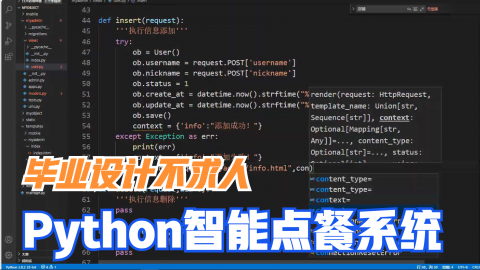一、装饰器
参考:https://zhuanlan.zhihu.com/p/87353829
https://blog.csdn.net/zhh763984017/article/details/120072425
将函数作为对象
闭包概念
def outer(x):
def inner(y):
return x+y
return inner # 返回一个函数对象
装饰器就是一个闭包,是在原有函数功能上的一个拓展
1、无参数的装饰器:
def cost_time(func):
def inner():
print(f'start time{time.time()}')
func()
return inner
@ cost_time
def time_sleep():
time.sleep(5) # 在函数中加入新的功能实现
2、装饰器传参:
被装饰的函数带有参数
def cost_time(func):
def inner(*args, **kwargs):
print(time.time())
func(*args, **kwargs)
@cost_time
def time_sleep(name):
print(f'进程名字:{name}')
time.sleep(5)
3、带参数的装饰器
装饰器函数带有参数,在@的时候需要传入一些必要的参数
import time
def count_time_args(msg=None): # 需要多加一层函数,引入传参
def count_time(func):
def wrapper(*args, **kwargs):
t1 = time.time()
func(*args, **kwargs)
print(f"[{msg}]执行时间为:", time.time() - t1)
return wrapper
return count_time
@count_time_args(msg="baiyu")
def fun_one():
time.sleep(1)
@count_time_args(msg="zhh")
def fun_two():
time.sleep(1)
@count_time_args(msg="mylove")
def fun_three():
time.sleep(1)
if __name__ == '__main__':
fun_one()
fun_two()
fun_three()
二、类装饰器
当我们将类作为一个装饰器,工作流程:
通过__init__()方法初始化类
通过__call__()方法调用真正的装饰方法
1、不带参数的类装饰器
import time
class BaiyuDecorator:
def __init__(self, func):
self.func = func
print("执行类的__init__方法")
def __call__(self, *args, **kwargs):
print('进入__call__函数')
t1 = time.time()
self.func(*args, **kwargs)
print("执行时间为:", time.time() - t1)
@BaiyuDecorator
def baiyu():
print("我是攻城狮白玉")
time.sleep(2)
def python_blog_list():
time.sleep(5)
print('''【Python】爬虫实战,零基础初试爬虫下载图片(附源码和分析过程)
https://blog.csdn.net/zhh763984017/article/details/119063252 ''')
print('''【Python】除了多线程和多进程,你还要会协程
https://blog.csdn.net/zhh763984017/article/details/118958668 ''')
print('''【Python】爬虫提速小技巧,多线程与多进程(附源码示例)
https://blog.csdn.net/zhh763984017/article/details/118773313 ''')
print('''【Python】爬虫解析利器Xpath,由浅入深快速掌握(附源码例子)
https://blog.csdn.net/zhh763984017/article/details/118634945 ''')
@BaiyuDecorator
def blog(name):
print('进入blog函数')
name()
print('我的博客是 https://blog.csdn.net/zhh763984017')
if __name__ == '__main__':
baiyu()
print('--------------')
blog(python_blog_list)
2、带参数的装饰器:
当装饰器有参数的时候,init() 函数就不能传入func(func代表要装饰的函数)了,而func是在__call__函数调用的时候传入的。
class BaiyuDecorator:
def __init__(self, arg1, arg2): # init()方法里面的参数都是装饰器的参数
print('执行类Decorator的__init__()方法')
self.arg1 = arg1
self.arg2 = arg2
def __call__(self, func): # 因为装饰器带了参数,所以接收传入函数变量的位置是这里
print('执行类Decorator的__call__()方法')
def baiyu_warp(*args): # 这里装饰器的函数名字可以随便命名,只要跟return的函数名相同即可
print('执行wrap()')
print('装饰器参数:', self.arg1, self.arg2)
print('执行' + func.__name__ + '()')
func(*args)
print(func.__name__ + '()执行完毕')
return baiyu_warp
@BaiyuDecorator('Hello', 'Baiyu')
def example(a1, a2, a3):
print('传入example()的参数:', a1, a2, a3)
if __name__ == '__main__':
print('准备调用example()')
example('Baiyu', 'Happy', 'Coder')
print('测试代码执行完毕')
三、装饰器的执行顺序是从里到外的。
内容来源于网络如有侵权请私信删除
文章来源: 博客园
- 还没有人评论,欢迎说说您的想法!





 客服
客服


